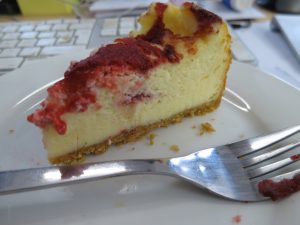When I was in college, pulling an all-nighter was a real thrill. Burning the midnight oil, I thought, was an exercise in devotion, a testament to the fires of my imagination. I now know better. I’d much rather be sleeping at 3 in the morning than shaping and reshaping my sentences, drowning my frustrations in mug after mug of black tea.

There’s one night of the year, though, when I still relish the prospect of staying up until the wee hours of the morn and tumbling, bleary-eyed, into bed when everyone else is heading to work, and that’s Erev Shavuoth, or, as it’s increasingly known, Tikkun Leil Shavuoth.
An age-old custom that has taken hold of the contemporary Jewish imagination, the Tikkun has arguably become one of the fastest-growing and most popular moments on the Jewish calendar. Even the most optimistic of observers would never, ever have predicted that the practice of staying up all night to study Torah would flourish in modern-day America -- and flourish among all segments of the Jewish population, not just among its most traditional and observant members.
Dressed in suits or in t-shirts, sporting yarmulkes or some other form of headgear, people gather together in droves. Some show up just for the cheesecake, others for the company and still others for the madcap fun of it all. Many of the attendees are drawn by the programming which tends to be as diverse and varied as they are. At the 14th Street Y Into the Night, you can study gemara, familiarize yourself with the meaning of shmita, stretch your limbs and listen to Bach. Further uptown, at the JCC of Manhattan Shavuot, offerings range from Israeli dance and cooking classes to an intensive encounter with Megillat Ruth.
However you explain it -- as an exercise in pluralism, an expression of postdenominationalism, a version of DIY Judaism, a form of neo-Hasidism, an instance of Jewish renewal -- by whatever name, the joint is jumping come 10 p.m. on Erev Shavouth and remains in motion until sunrise.
Be there. It’s probably as close as any of us will ever get to Mount Sinai.


